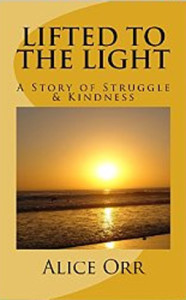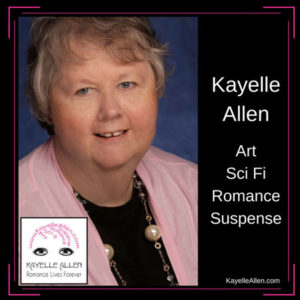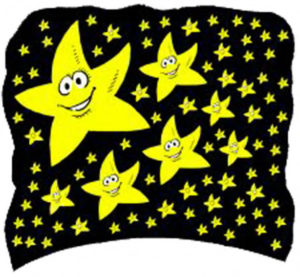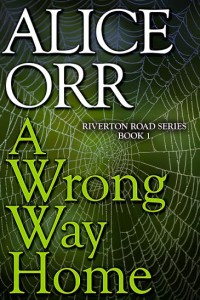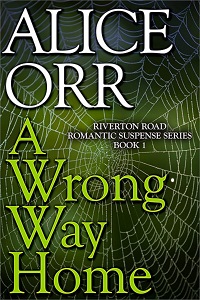Giving Thankfuls for Our Writer Lives. In our yellow house on Vashon Island the dining table was battered from years of grandkid use. The chairs had been rocked so many times Grandpa Jonathan had to bolt the legs to the frames. This was the precious place where we held hands at mealtime and practiced gratitude for our lives together. We called it Giving Thankfuls.

Our Storytelling Lives are Equally Blessed. The guests at our tables exist only in our heads but they rollick and roar and rock the chairs all the same. They give us hissy fits. But would you want to live without them for a day? We Give Thankfuls for our imaginary friends.
We Sit in Battered Bolted Chairs and Stare at the Wall. Real life plays out in front of us but we are otherwise engaged. Images peek from under the tableware. What ifs clatter louder than the cutlery. We savor the symphony of inspiration and Give Thankfuls for the scenes we see.
An Array of Plot Possibilities Fills our Formerly Empty Plates. We pick and choose. Mix and match. Consider and rethink. We alter the menu at will. Always in service of the purposes of the plot. Always hungry for what works best. We Give Thankfuls for the feast of creativity.
The Banquet Continues for Days Months Years. Our appetites are sometimes satisfied but often they are not. We may leap up from the table in exasperation. Nonetheless we eventually return and struggle again to get the ingredients exactly right. We Give Thankfuls for resilience.
At Last we Add these Luscious Words – The End. We pound the well-used table or collapse upon it. Though probably exhausted we are also filled with joy and chair-rocking energy. We laugh. We sob. However we express it we are Giving Thankfuls for Our Writer Lives.

Being Storytellers has Put Us in the Amazing Company of Other Storytellers. We honor that company for its generosity, its wit, its endless ingenuity. We find role models and helpmates there. Friends too, professional and personal. We Give Thankfuls for our writers’ community.
Being Storytellers has Put Us in the Amazing Company of Readers. The upfront readers who help us grow our work. The priceless readers who review that work after it has come of age. The readers we pray will become our fans. Who could possibly not Give Thankfuls for readers?
Each Morning Begins a New Day to Rejoice in Storytelling. What gave us this glorious gift? In my case it was Grandma. She told her stories aloud. I write mine down. Her spirit abides in me and mine in her. I shall Give Thankfuls forever for her believing in me from my start.
Today My Own Grandkids are No Longer Kids. We are all back on the east coast now. Grandparents and parents. In-laws and outlaws. Jonathan and I are still a twosome fifty years and counting. We have never stopped holding hands and Giving Thankfuls and hope we never will.

Meanwhile my Storytelling Life Continues. So does yours. We are filled with memories. We are calm or stormy at turns. We have not gone gentle into any night – good are otherwise. We are the characters we have written and become. We are Giving Thankfuls for Our Writer Lives.
Alice Orr says – You Possess Storytelling Magic. Keep on Writing Whatever May Occur. https://www.aliceorrbooks.com.
Ask Alice Your Crucial Questions. What are you most eager to know – in your writing work and in your writer’s life? Ask your question in the Comments section at the end of this post.
Alice Orr – Teacher. Storyteller. Former Literary Agent. Blogs for Writers. Author of 16 novels, 3 novellas and a memoir so far. Wrote No More Rejections: 50 Secrets to Writing a Manuscript that Sells as a gift to the writers’ community she loves.
Alice’s holiday novel, for which she Gives Thankfuls, is A Vacancy at the Inn – Riverton Road Romantic Suspense Series Book 3 – available HERE. Celebrate the Season!
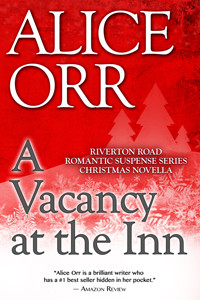
Praise for A Vacancy at the Inn. “Grabbed me right away and swept me up in the lives of Bethany and Luke.” “Undercurrents of suspense move the story along at an irresistible pace.” “The Miller family is rife with personality quirks, an authentic touch that demonstrates Alice Orr’s skill as a writer.” “I never want an Alice Orr book to end.”
All of Alice’s Books are HERE.
http://facebook.com/aliceorrwriter/
http://twitter.com/AliceOrrBooks/
http://goodreads.com/aliceorr/
http://pinterest.com/aliceorrwriter/
